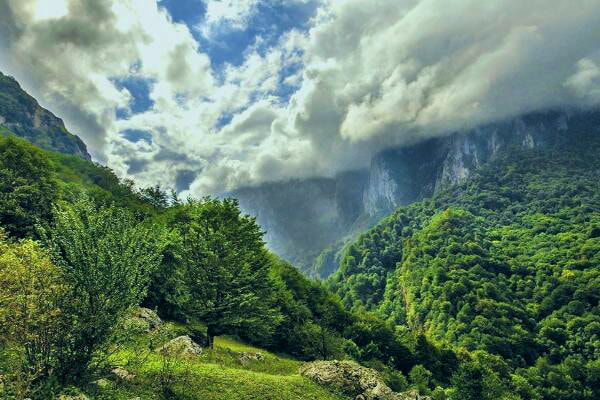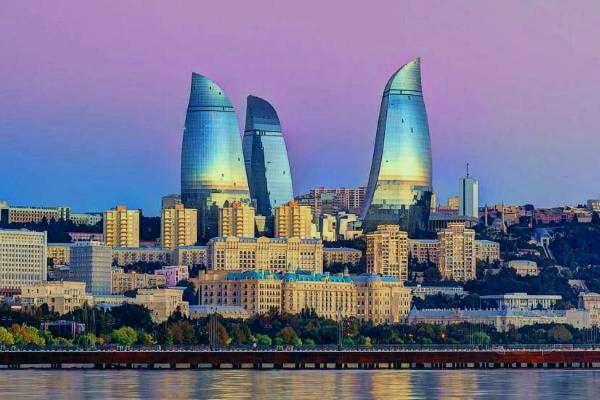Located on the shores of the Caspian Sea, Baku is the capital of Azerbaijan. The city is a commercial hub with a medieval walled old town. It is home to the Palace of the Shirvanshahs, a vast royal complex, and the Maiden Tower, an iconic stone tower.
Ateshgah Fire Temple
Located in Azerbaijan, the Ateshgah Fire Temple in Baku is a religious site and a popular tourist attraction. The fire is fed by natural gas piped in from the city of Baku. The flames burn forever, as long as the gas continues to flow.
Originally known as the Temple of External Fire, the Ateshgah Fire temple is a Zoroastrian site of worship. It has also been used by Hindus and Sikhs. The temple was built during the 17th and 18th centuries.
The Ateshgah fire is thought to have originated in the Sassanid period. Early Zoroastrians believed that the fire represented purification and wisdom. They also believed that the flames played an important role in the birth of Zoroastrianism.
Nizami Street
Located in the center of Baku, Nizami Street is one of the busiest streets in the city. During the early years of the oil boom, the population of the city increased by millions. This increased the demand for food and clothing, and the construction of new buildings occurred in order to keep up with the growth. The buildings that appeared on Nizami Street reflect various architectural styles.
The first phase of the development of the street was built in the 19th century. The architecture of the buildings was inspired by Neo-Moorish style architecture. This was especially noticeable in the implementation of monograms and arches.

Fountain Square
Located in downtown Baku, the Fountain Square is a place of peace and relaxation. It features a variety of fountains, a carousel, and a mosaic-style walkway. It is also home to many restaurants and shops.
The history of the Fountains Square dates back to the late 19th century. It was once known as Parapet. It was a public square that formed an important part of the city's business and political center. It is also said to have been a place where people gathered for religious events.
When the city was under Soviet rule, dozens of fountains were constructed. Eventually, the area was renamed as the Fountains Square. The reconstructed square was designed by artist and architect Ragim Seyfullayev. His renovations featured red and white stones and low curbs.
Ganlik Mall
Located in the heart of the city, Ganjlik Mall is a four-storey shopping center with a lot of the usual suspects. The mall also boasts a new hypermarket and several notable restaurants.
The shopping center is designed by Czech architectural firm Chapman Taylor. It is a well-rounded shopping experience with a number of unique and distinctive cafes.
The 50,000 square meter building is also home to a multi-purpose entertainment complex. Among the many amenities offered are a bowling alley and family entertainment. There are a variety of restaurants to choose from, including the aptly named Papa John's Pizza.
Ganjlik Mall is a modern shopping center with a few unique attractions. It also has a garden.

Ancient Palace of the Shirvanshahs
Located in the inner city of Baku, the Ancient Palace of the Shirvanshahs is one of the most important monuments of Azerbaijani history. It was declared a World Heritage Site by the United Nations Educational, Scientific and Cultural Organization (UNESCO) in 2000. The palace was built in the 15th century, and was later converted into a State Historical-Architectural Reserve Museum.
The Palace of the Shirvanshahs, also known as the Khkh shrwnshhn in Persian, is a grand sandstone complex. It was originally enclosed by a wall with towers, but the building was renovated in the 20th century and restored as a museum. The palace was protected as an architectural monument in 1960.
Museum of Miniature Books
Located in the Old City of Baku, Azerbaijan, the Museum of Miniature Books is the only such museum in the world. This small but elegant gallery displays nearly 3000 unique books. The collection includes miniature editions of Pushkin's works, as well as a rare copy of the Quran.
The museum opened its doors on April 23, 2002. The exhibits include an elaborate pop-up with hundreds of intricate pieces, cutting-edge computer technology, and traditional letterpress. Among the books on display are those written in numerous languages.
The museum has a section for Azerbaijani literature. There are a number of fairy-sized books about Azerbaijani presidents and former presidents. The section also contains books on the life of Mustafa Kemal Ataturk.



